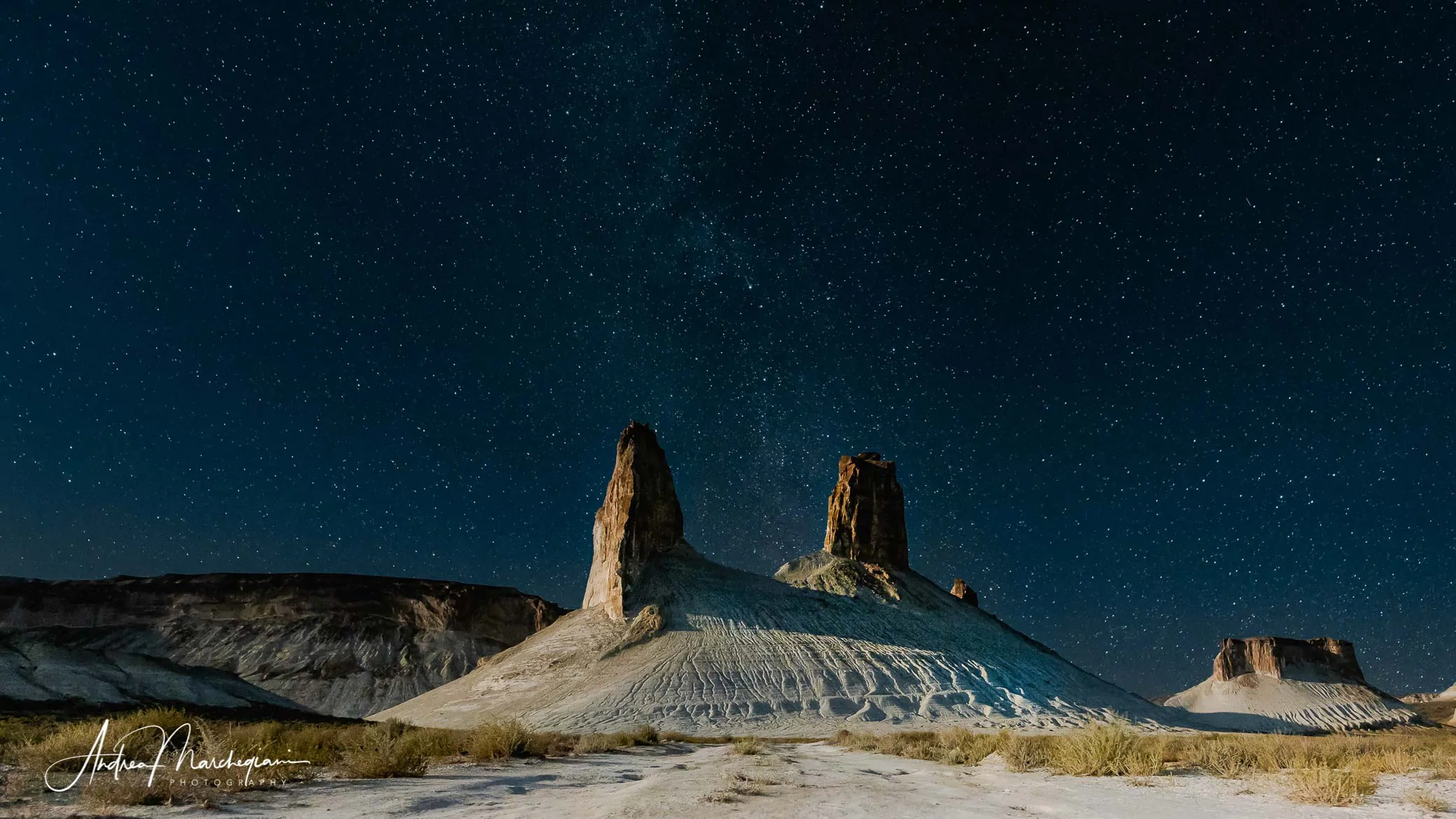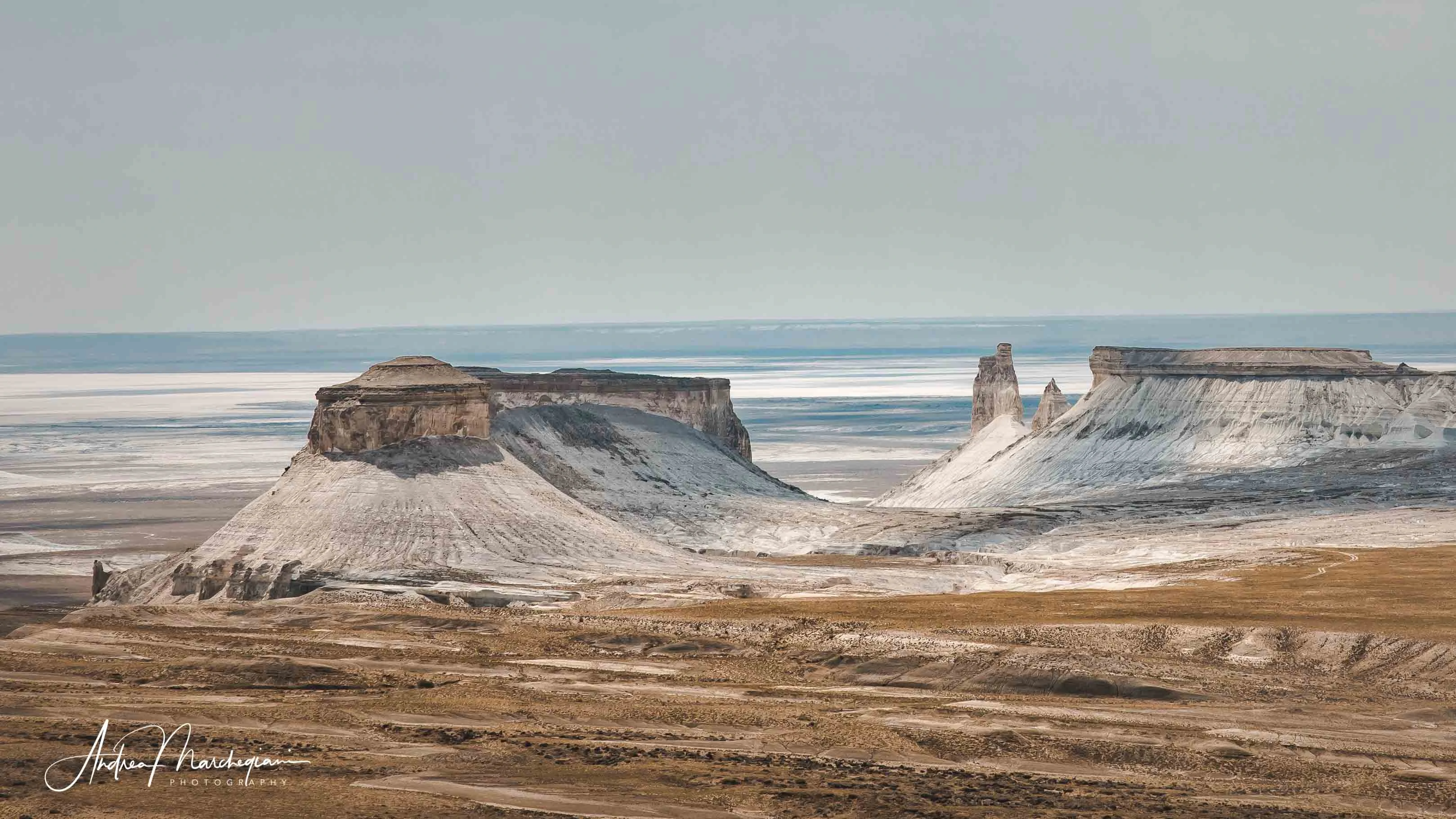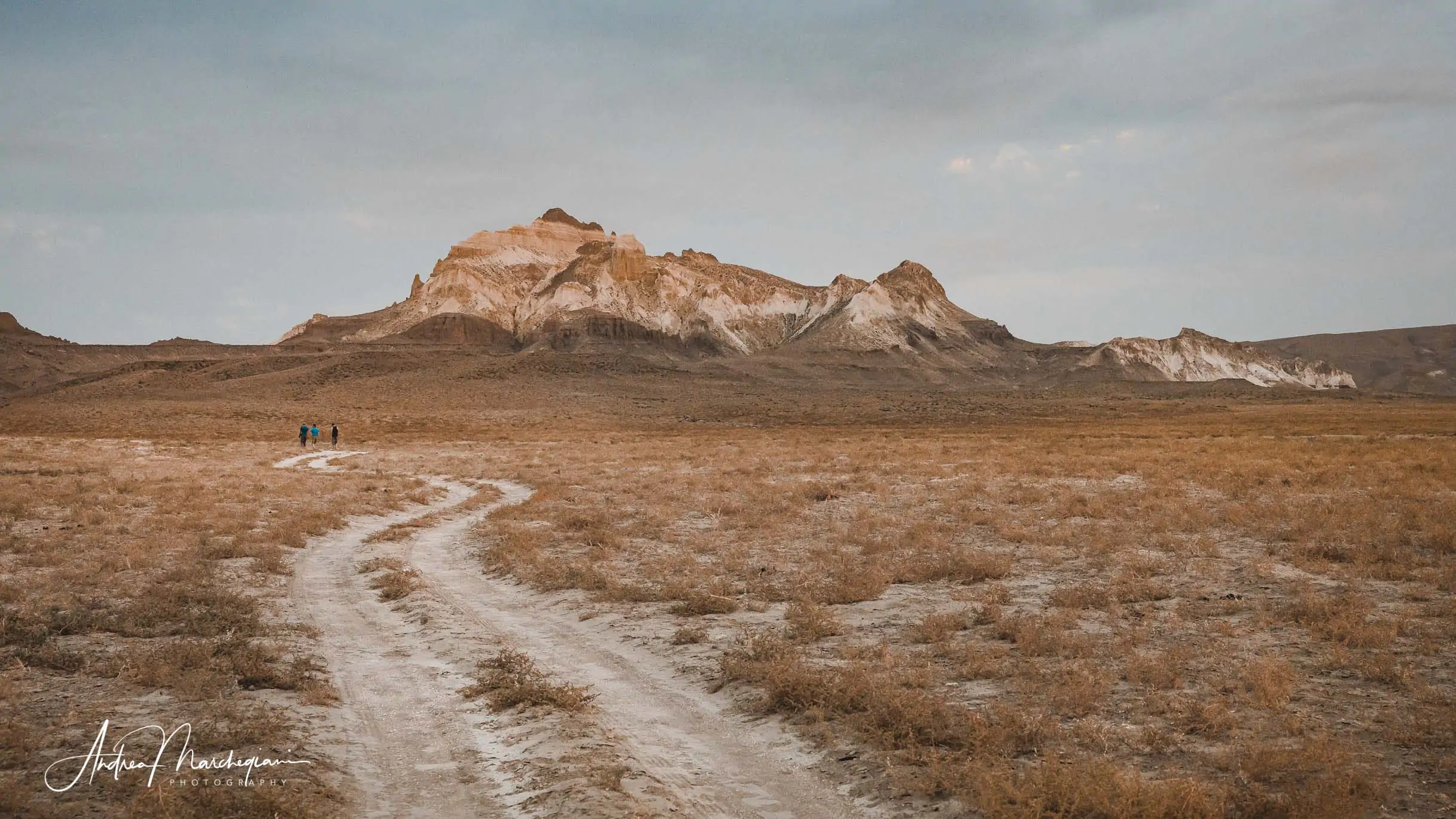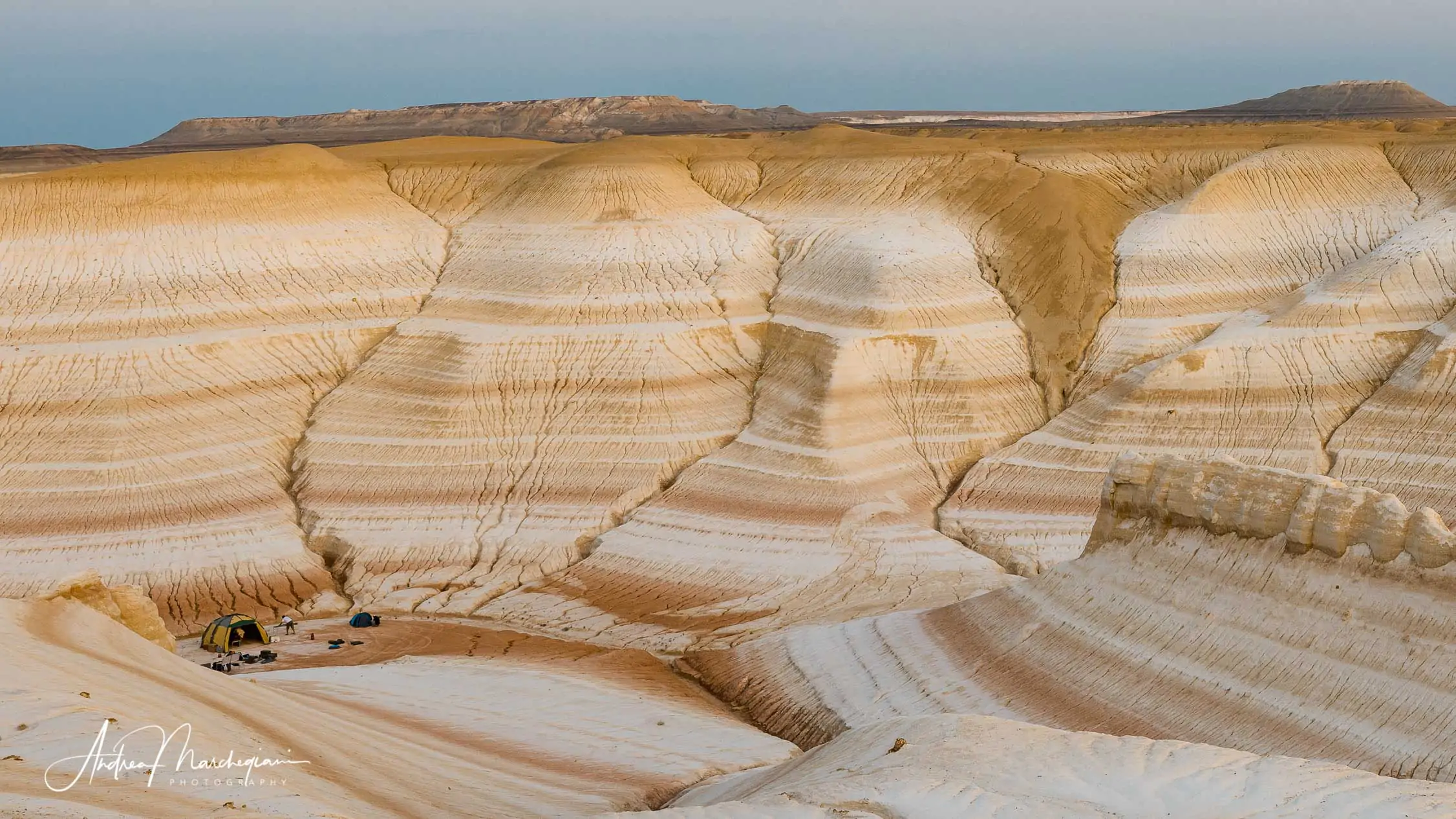
- Home
- Photo Galleries
- Portrait Photography
- Landscape Photography
- Street Photography
- China
- Ethiopia
- India
- Holy Ganges
- Varanasi
- Varanasi Ganga Aarti
- Varanasi, Manikarnika Ghat
- Varanasi Streets & Alleys
- Varanasi Demolition
- Varanasi Fruit Market
- Sarnath
- Brick Kilns
- Tamil Nadu, Chennai & Mamallapuram
- Tamil Nadu, Fort Tirumayam & Madurai
- Tamil Nadu, Tiruvannamalai & Thanjavur
- Kerala, Munnar
- Kerala, Peryiar
- Kerala, Backwaters
- Kerala, Kochi
- Kazakhstan
- Myanmar
- Senegal
- Uzbekistan
- Travel Blog
- China
- Ethiopia
- India
- Tamil Nadu & Kerala
- Varanasi
- Whato to do in Varanasi
- Varanasi Life along the Ghats
- Varanasi Death along the Ghats
- Varanasi Ganga Aarti Ceremony
- Varanasi demolished to honor Shiva
- Varanasi Fruit Market
- “Varanasi, A Journey into the Infinite”
- Sarnath
- All about River Ganges
- Holy Shit. All about Indian Cow Dung
- Clean India Project
- Brick factories
- Tilaka, pundra, bindi: what is the mark on Indian foreheads?
- Kazakhstan
- Mongolia
- Ulaanbaatar, the coldest capital in the world
- What to do in Ulaanbaatar
- Chinggis Khan Museum, 6 floors of Mongolian history
- Gorkhi-Terelj National Park and Bodgkhan Natural Reserve
- Altai Mountains, Things to do in Olgii and Sagsai
- Living with the Eagle Hunters
- Sagsai Eagle Festival
- Navrus Festival
- Xöömej, Mongolian throat singing
- Mongolian Food
- Myanmar
- Senegal
- Uzbekistan
- Latest Posts
- Photography Blog
- About
- Prints
“Would you rather walk to the center of the lake or climb to the top of the cape and watch it from above?”. Sergey’s question is distracted, but for a traveler like myself, who is a Chiken risk lover, this has existential implications. The shores of the lake climb to the sky. They couldn’t be steeper than this. The answer is obvious…
Share with your friends:
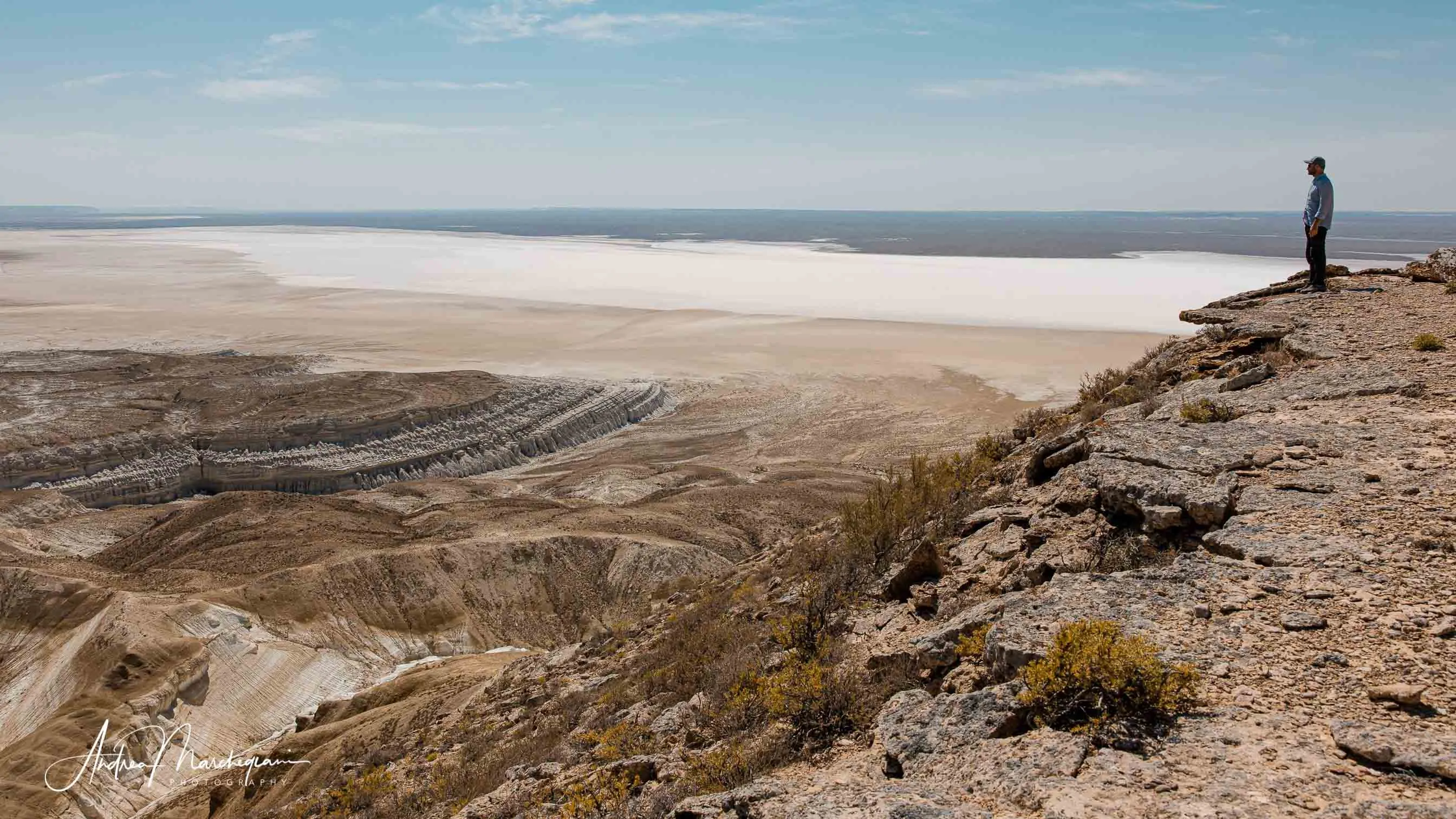
Sor Tuzbair, a lake in the desert
Exploring the Tuzbair Salt Lake is the last stop of my stay in the Mangystau Desert. I try to impress upon the memory every detail of this place, its harshness, its pacifying rhythms. Jeeps run fast under a sunny sky.
“Is there really a lake in the middle of the desert?” I ask Sergey. “Not now. The water is collected here during the rainy season, but in summer it evaporates and only salt remains. In the middle of the lake, however, the ground is still muddy.
Sometimes summer storms surprise tourists: the water is quickly conveyed into the lake basin and you risk getting bogged down. It can be dangerous”.
We stop for a refueling of gasoline, which here in Kazakhstan costs less than 20 cents per liter. The deposits of natural gas and crude oil make it one of the richest countries in the world. The guy who supplies us wears a balaclava. I saw several of them on sale in a market we passed this morning. They are not used to cover their face to attempt a robbery, but to shelter themselves from the sandy wind that can suddenly rise. I’m surprised to see these gas stations popping up like mushrooms in the middle of nowhere. A few meters from it, a herd of wild horses runs, manes in the wind, along the roadside.
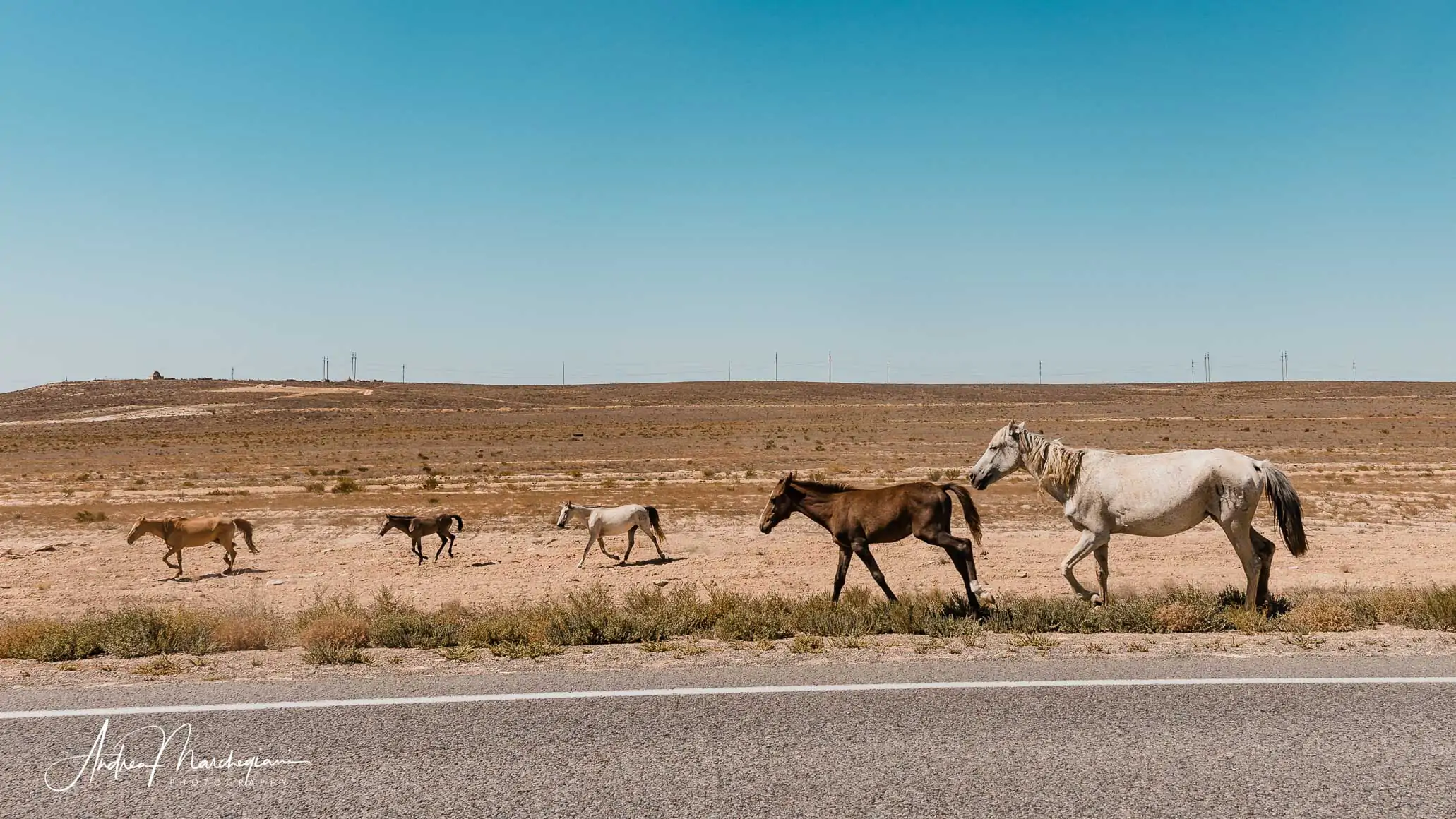
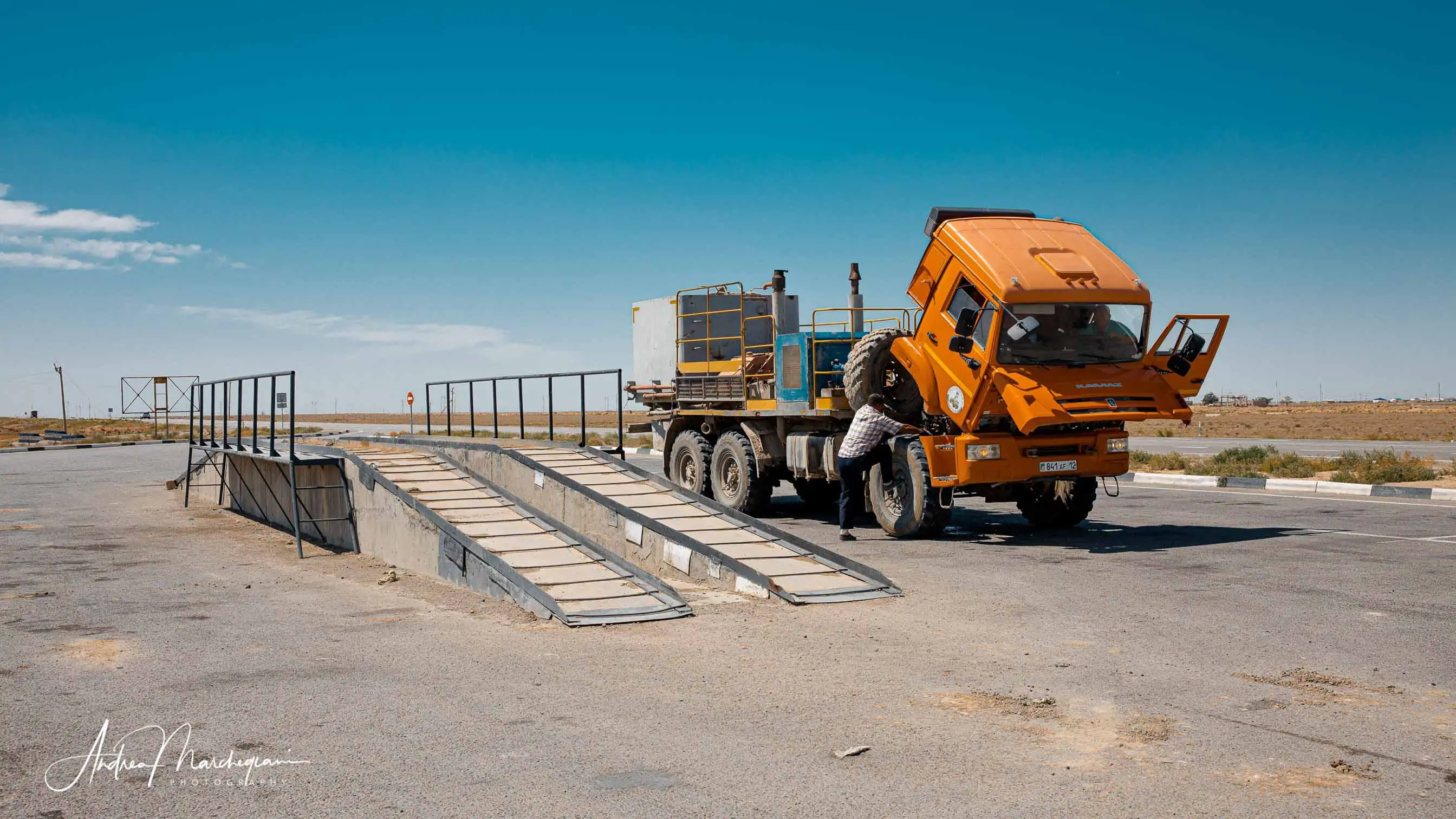
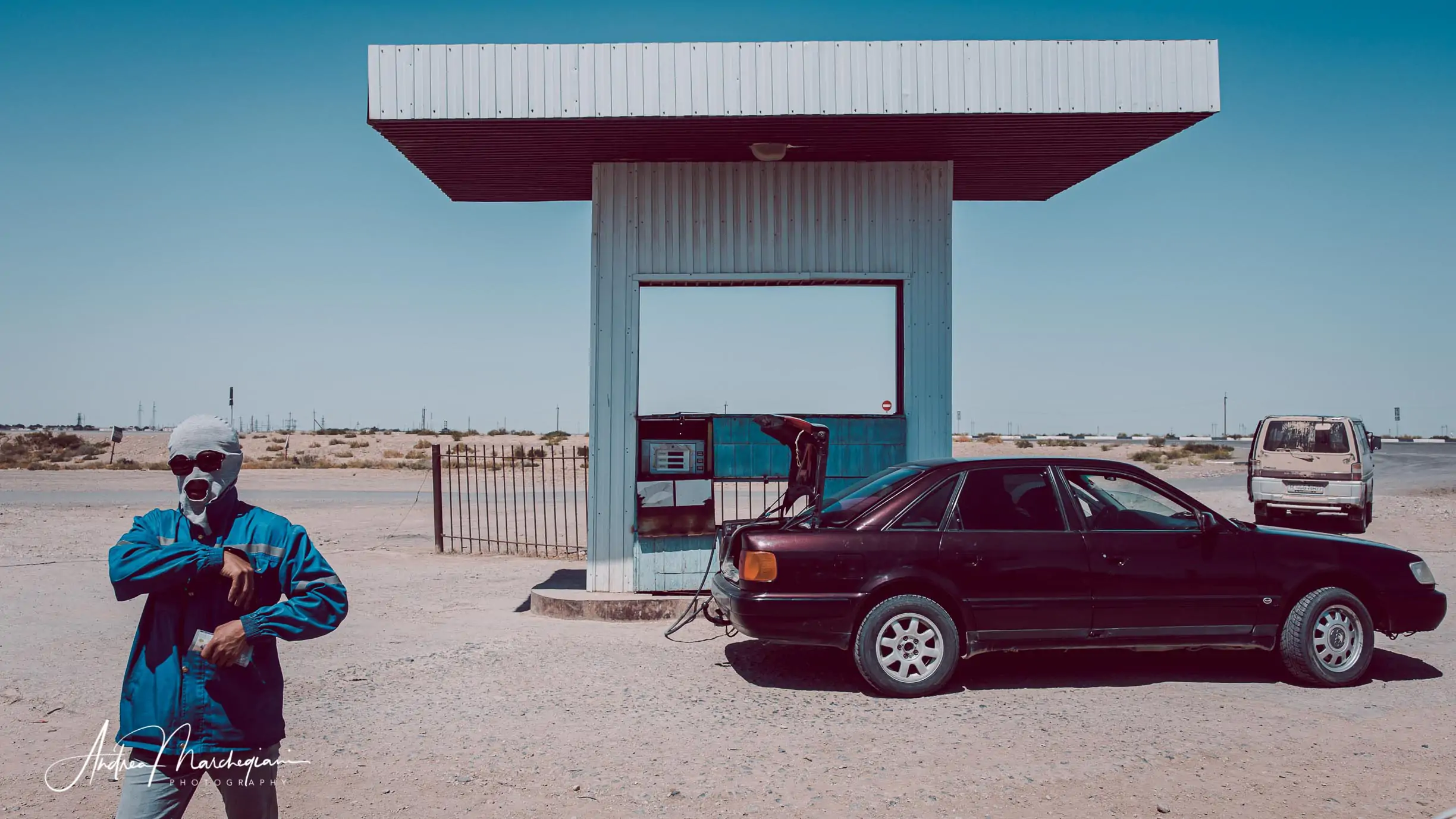
Who painted the shores of Lake Tuzbair?
We arrive at Lake Tuzbair in the middle of the afternoon. A very large flat area extends everywhere. You wouldn’t know it, but we’re in the middle of the lake. The jagged shores define the perimeter of the lake behind us, but before us the plain seems boundless.
The lake is located in the southwestern region of Mangystau, where there are no water sources and the land is rich in salt.
About 250 million years ago this area was covered by the ocean of Tethys, so it’s actually sea salt. Seen from above, the white colouration of the salt soil produces a small mirage and the lake seems covered with water even in summer.
In addition to the lake basin, tourists are attracted by its unique shores, with peaks and ripples that seem drawn. Tomorrow morning, if we want, we can climb them.
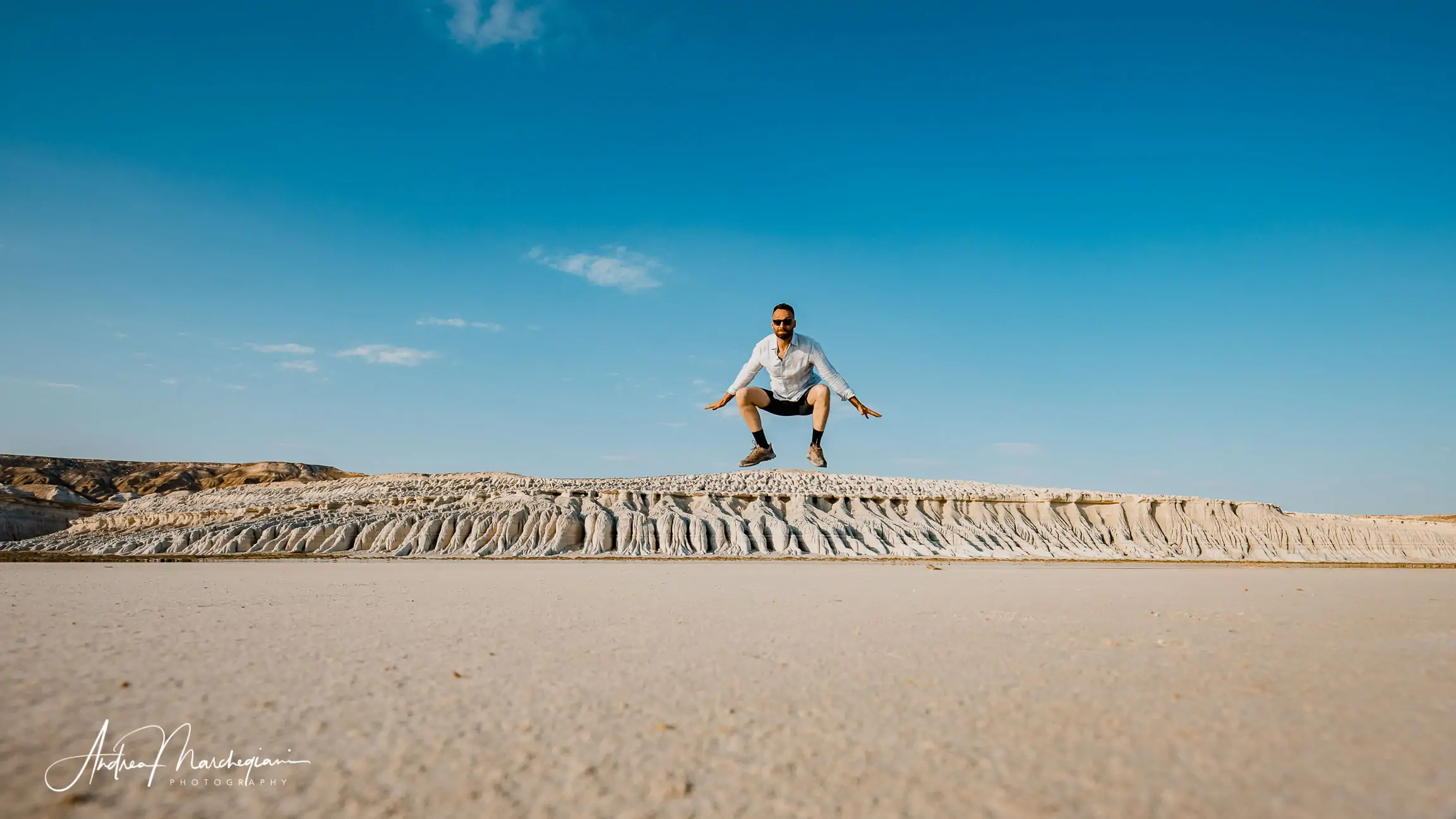
The sun sets and Sergey comes running to me pretty worried. “Stop taking funny pictures”, he scolds me. ” Sun’s going down right now, and you still haven’t photographed the hole in the rock. Don’t say I didn’t warn you”. I now have a Kazakh older brother watching over me. I’m really lucky!
I approach the rock formation: the light and the evening shadows underline the indentations. The effect is sensational.It reminds me of Grayskull temple!
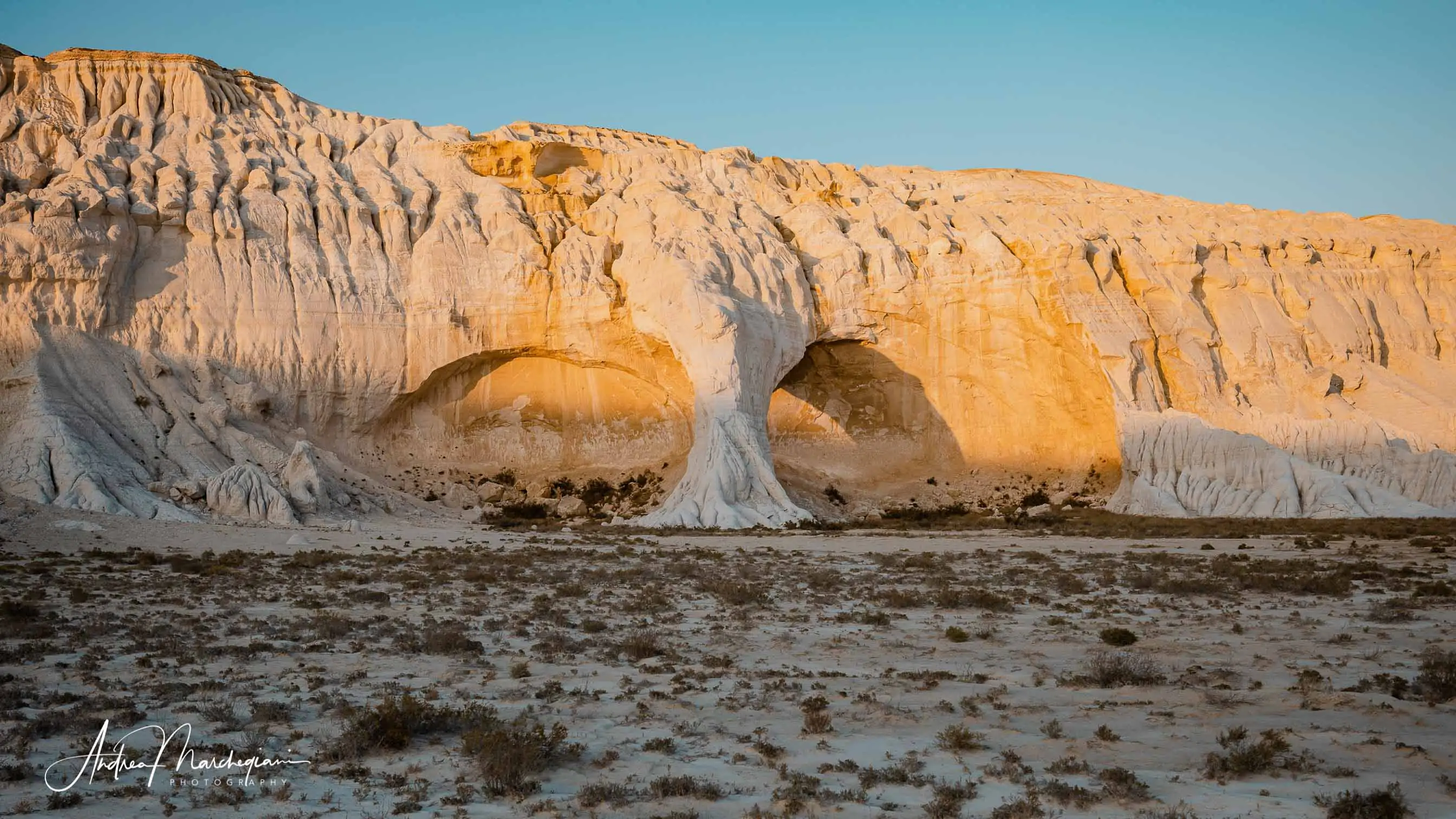
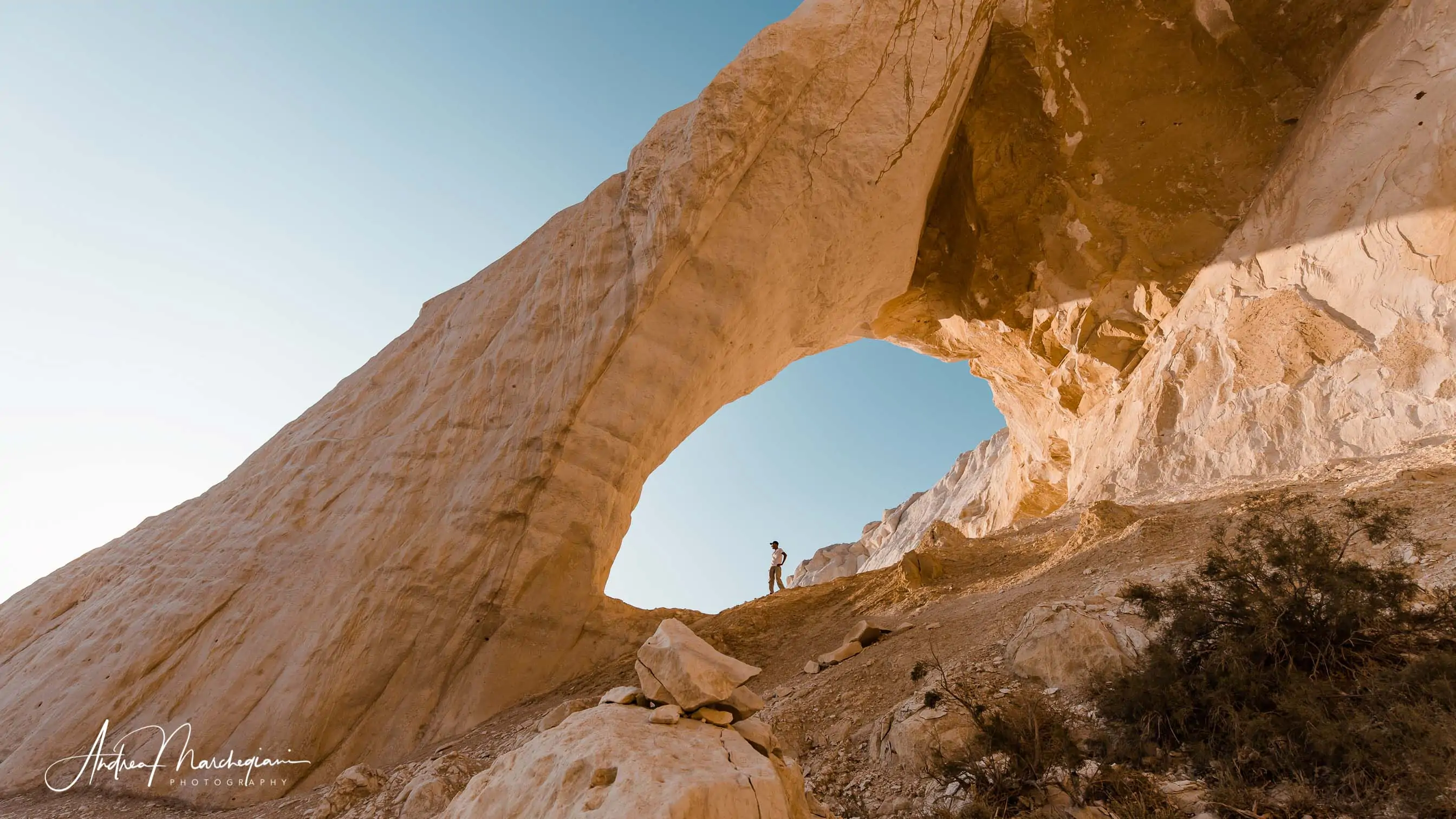
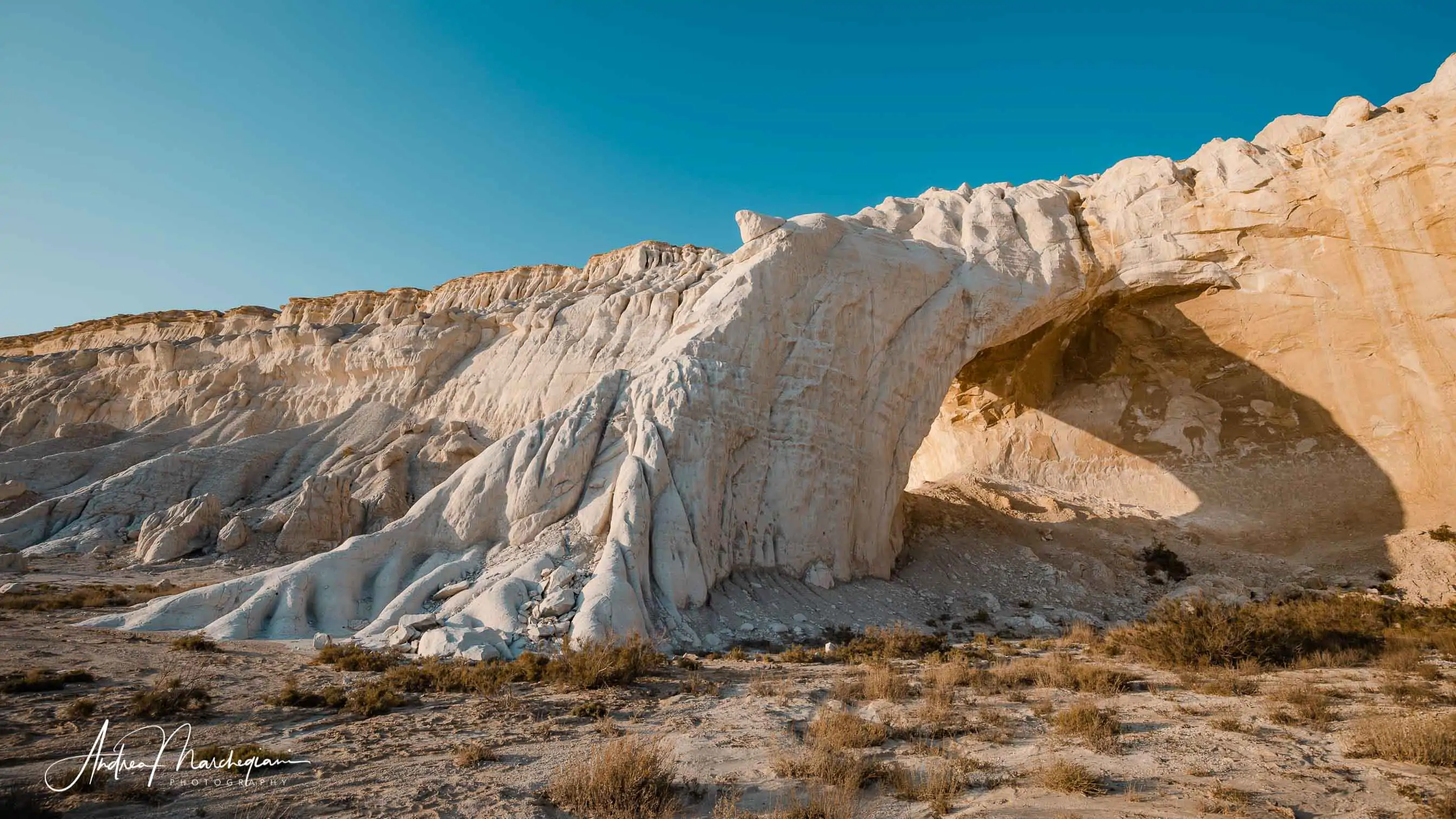
A bonfire in the desert
I stay here until sundown. When I get back to the jeeps, Sergey and his companions are preparing dinner. I set up my tent and look around. There is always a time when a strange place becomes familiar to us.
It usually happens when you’re about to leave and that is happening to me now. I look around and I get a deep melancholy. Sergey also lit a bonfire tonight to celebrate our last night here. Is he going to squeeze tears out of my eyes?
Before going to sleep, I remove the roof of the tent. I sneak into the sleeping bag and look up. The stars are etched one by one on the bottom of the night. They’re so sharp I could to count them all.
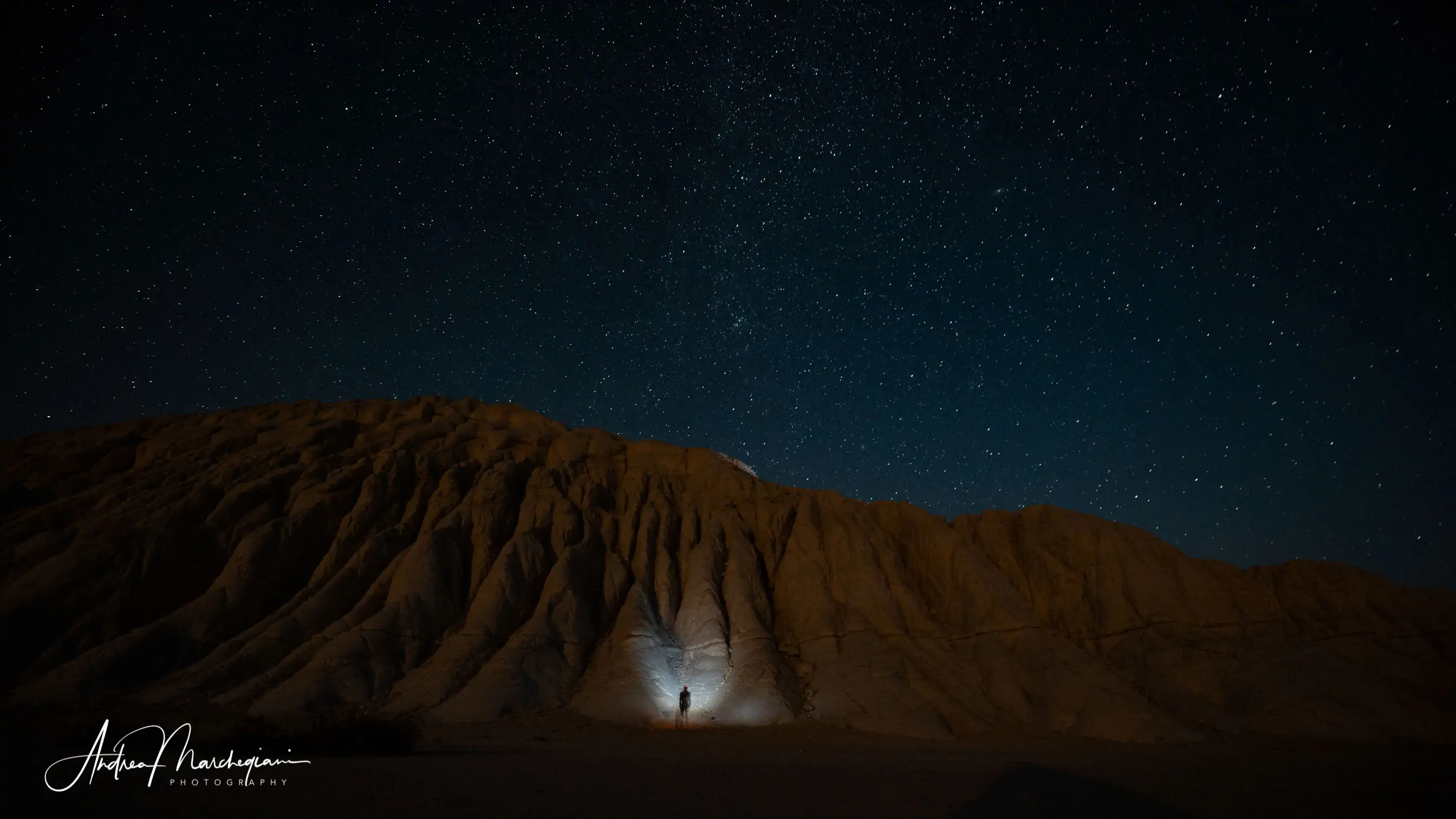
Trekking on the promontory of Lake Tuzbair
Wake up at dawn. We’ll have breakfast after one last trek. The group splits in two on where to head. “Would you rather walk to the center of the lake or climb the cape to the top and look down on it?”
Sergey’s question seems random but to me, a risk-loving traveler but somewhat chicken, it has existential implications. The shores of the lake climb sharply to the sky. They couldn’t be steeper than this. ” I survived the canyon of Bozshira, I will not be stopped by Tuzbair!” I answer. “Bravo, Andrea. You’ll see, it is not dangerous!”
A shiver runs down my back.
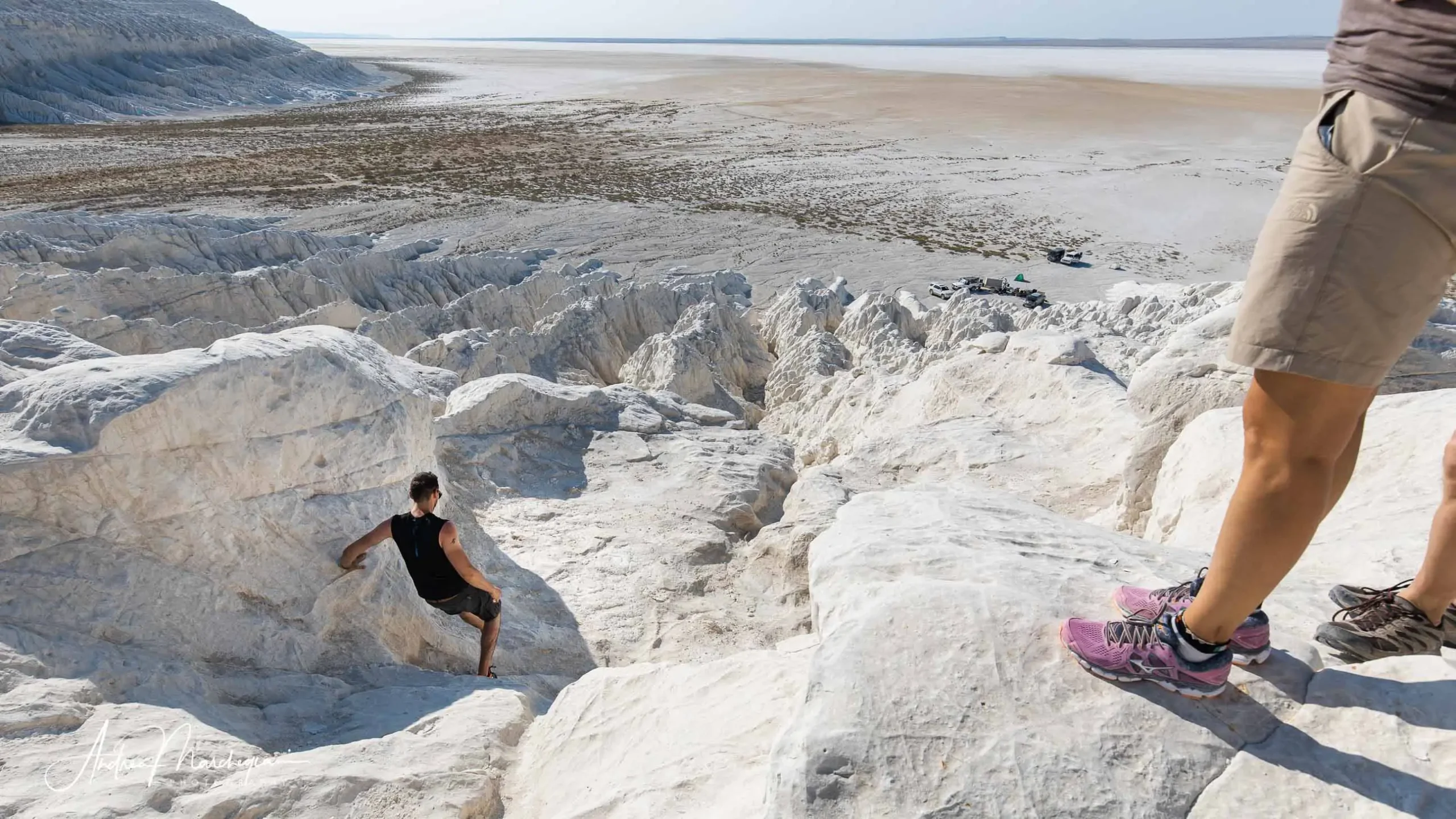
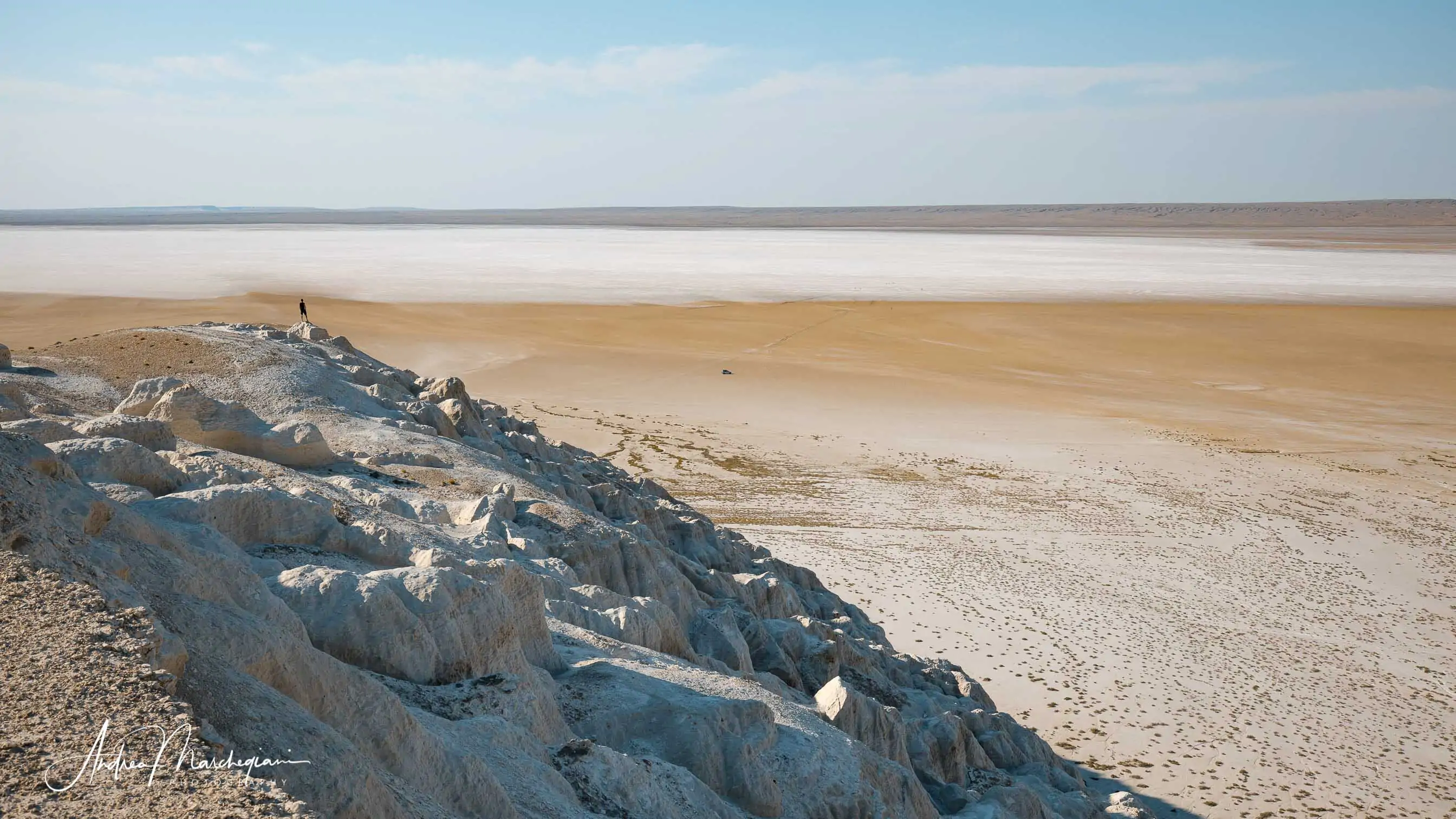
The climb is tiring but feasible. We get to the top and enjoy an indescribable view.
The ridges on the shore of the lake wind one after the other, creating rounded ledges and narrow creeks. The hazel-colored soil and the salt create very clear contrasts. They don’t call it ‘the painted desert’ for nothing.
I’m taking a night train tonight to Uzbekistan. The thought of never seeing these harsh and regenerating scenarios again leaves me a little bitterness. We arrive at the station in silence. Apparently, I’m not the only one who doesn’t love goodbyes.
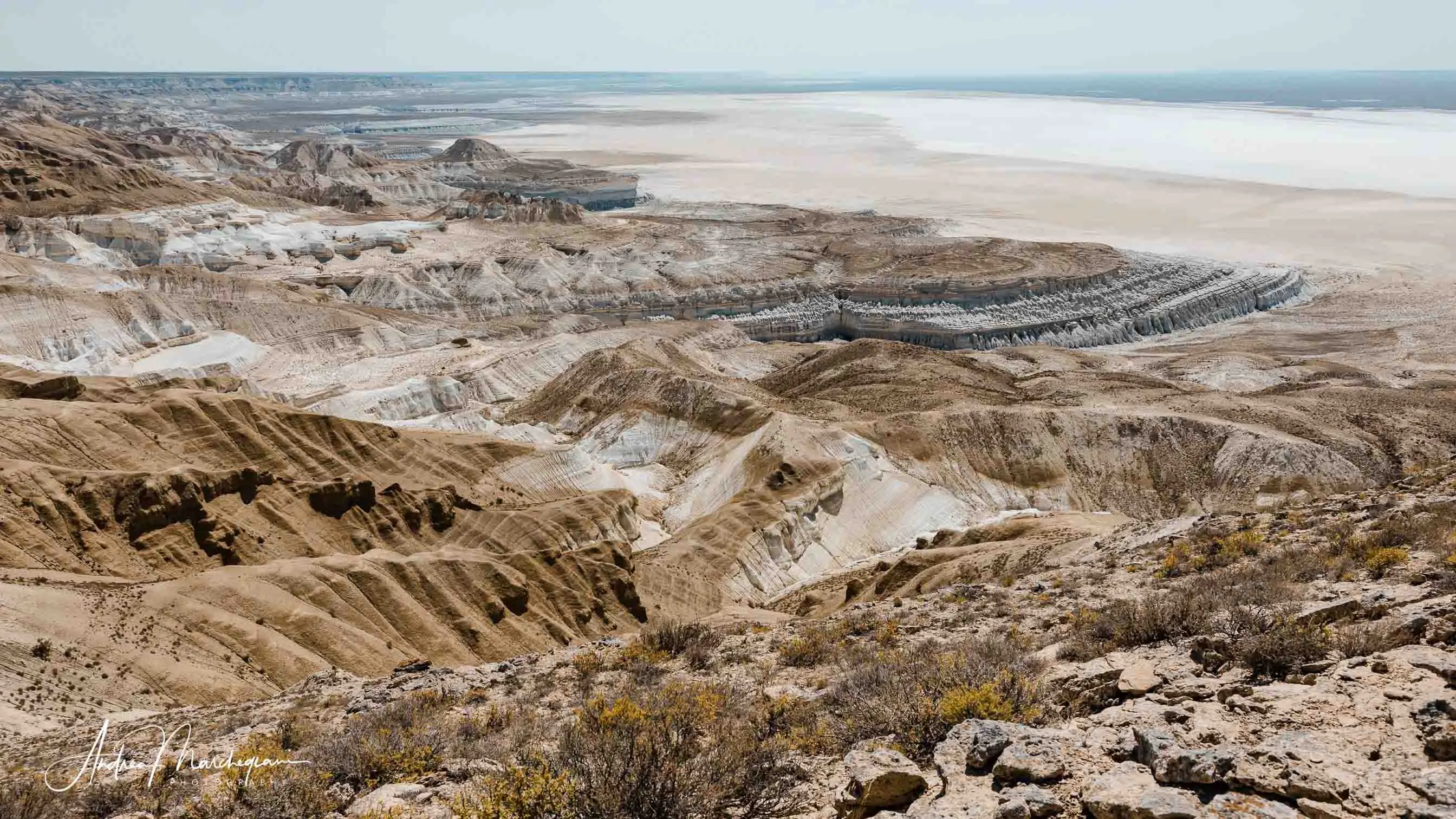
We get on a train in chaos, while my mind recalls the places I visited in these last few days: the vertiginous canyons of Bozzhira, the Kyzylkup mountains which Sergey renamed Tiramisu hills and the suggestive Valley of Castles.
“When I get home, I will write an article about the 7 reasons not to come to Mangystau”, I tell Giulia as we get on the train. “No washing, little food, no toilets… we must find four more”.
We try a little, then we give up. Our attempt to discourage tourism in Mangystau fails miserably. The truth is that we have fallen in love with this territory and we would like to preserve it from the risks of mass tourism. The very idea that someone could come through here and leave a trail of plastic bottles and scraps of paper is like a punch in my stomach. I can only hope that future travellers will understand the value of this region and respect it.



